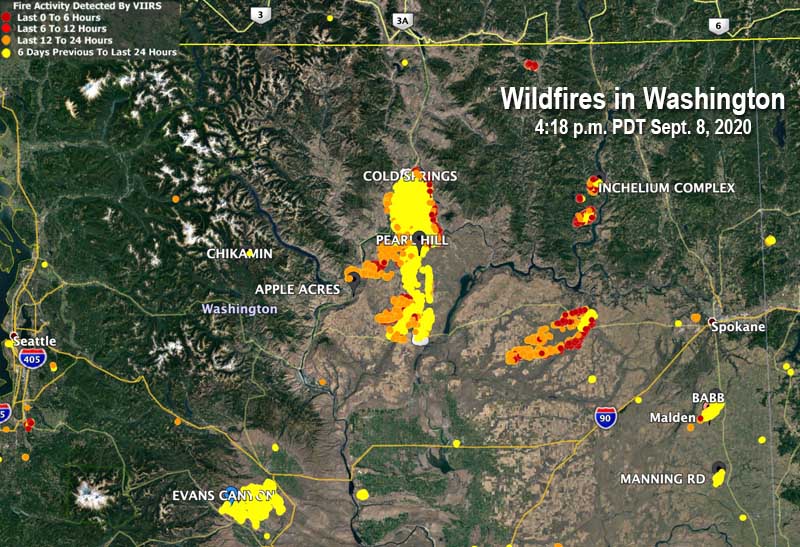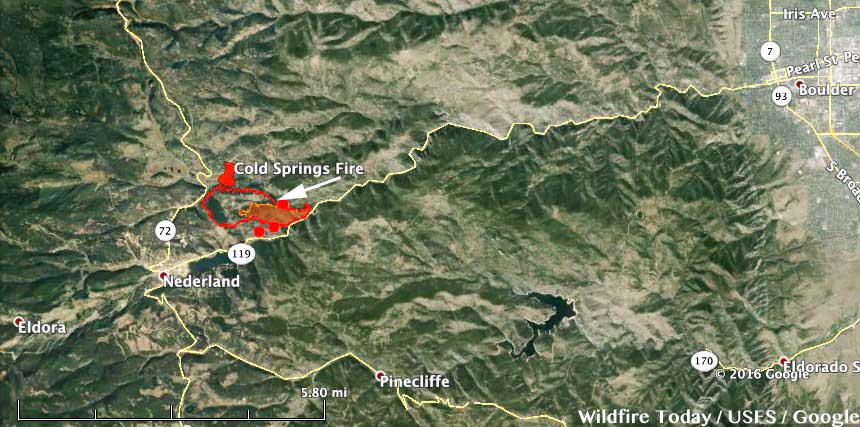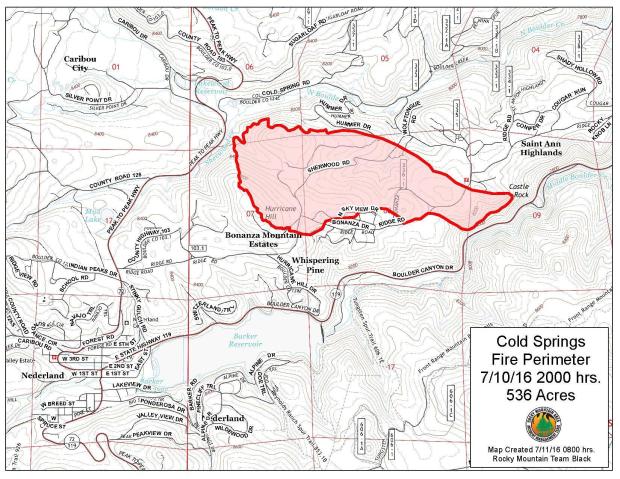September 8, 2020 | 9:23 p.m. PDT

The number of wildfires and acres burning in Washington and Oregon are reaching a level that is close to unprecedented in recent memory.
Tuesday afternoon the western one-quarter of Oregon was inundated with dense smoke from multiple fires south of Portland and mostly east of Interstate 5. Strong winds are turning small fires that were ignited weeks ago in Marion County, Oregon into major incidents as law enforcement officers and firefighters try to stay ahead of the fires evacuating residents in their paths.
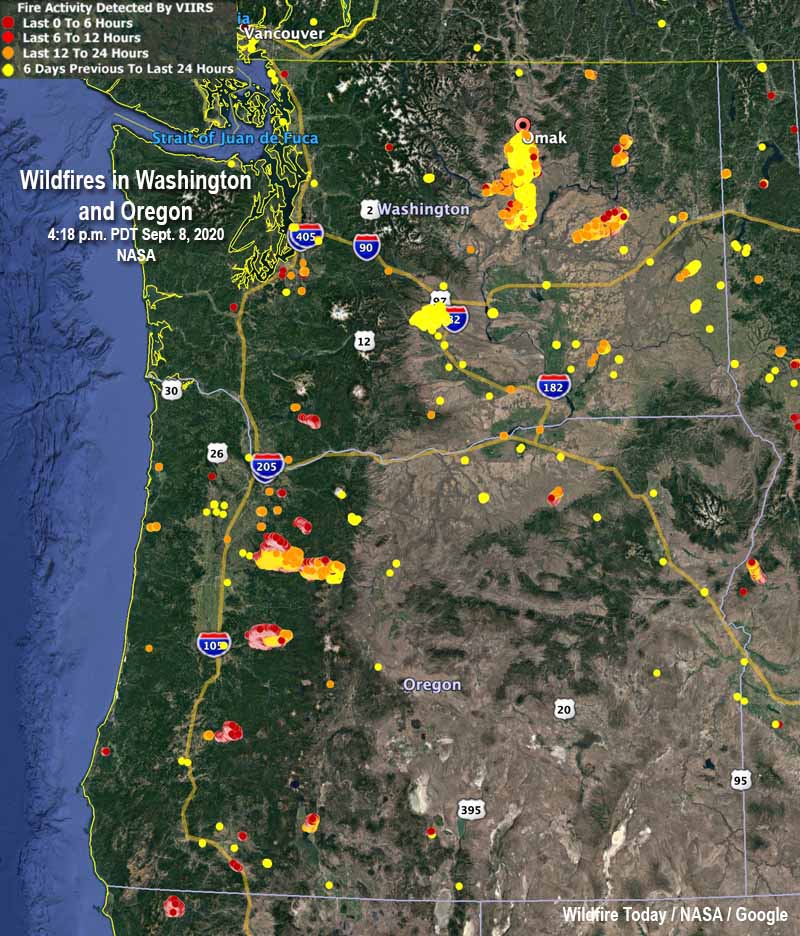
Thousands of Oregonians were under evacuation orders Tuesday. OPG.org reported that officials said they were so focused on protecting lives and property that suppressing the blazes consuming hundreds of thousands of acres would have to wait. “Our number one priority is evacuation and basic life safety,” said Mariana Ruiz-Temple, chief deputy state fire marshal. “This wind event does not give us the opportunity to really get in there and fight fire how we might fight fire in previous events.”
The Glendower Fire started north of Ashland, Oregon then spread northwest along the Interstate 5 corridor into Medford. Much of the city is under evacuation orders and multiple structures have burned. (More information about the Glendower Fire, including a map.)
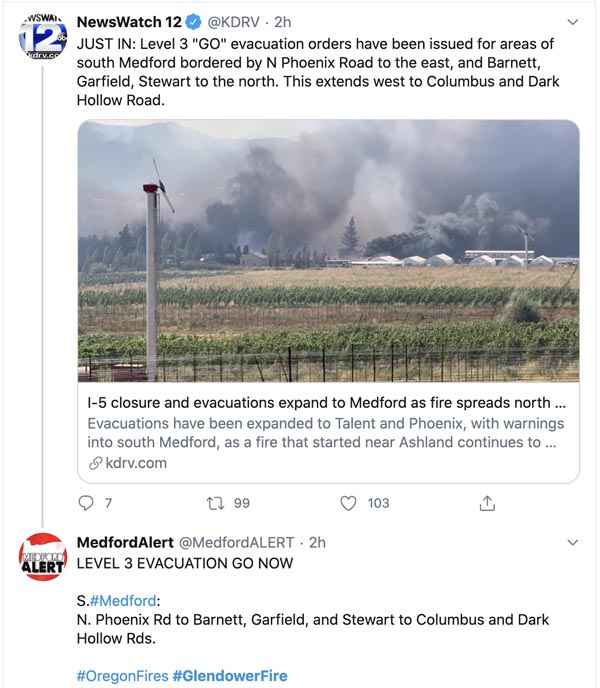
Strong winds accompanying a cold front was the primary force responsible for the rapid spread of the fires, but some of the driest conditions seen in decades led to low moisture content in vegetation that made large quantities of fuel available to quickly ignite.
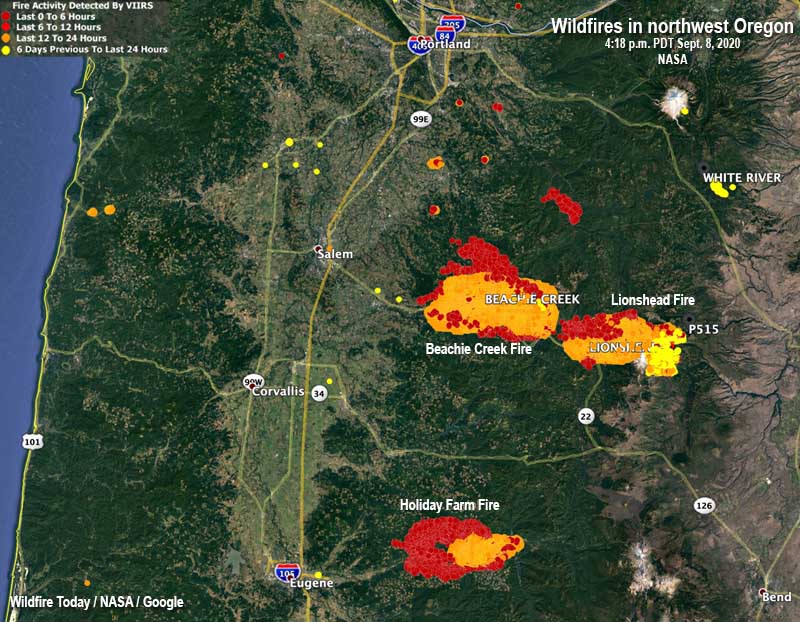
The New York Times reported the National Weather Service on Tuesday placed Northwest and southwestern Oregon under an extreme fire danger warning, the first time southern Oregon has been the subject of such a warning, according to the Oregon Climate Office. The Oregon Department of Corrections evacuated 1,450 inmates from three prisons east of Salem.
The New York Times:
Gov. Jay Inslee of Washington said on Tuesday that an estimated 330,000 acres had burned across the state on Monday, more than what burned in each of the last 12 fire seasons. “The devastation is all over our state,” Mr. Inslee said in a news briefing.
One of the smaller fires in Washington, relatively speaking, wiped out about 80 percent of the structures in Malden, a town of 200 people south of Spokane. Officials said the buildings that burned included the fire station, post office, city hall, and the library.
Three of the largest blazes in Washington are Cold Springs south of Omak (163,000 acres), Pearl Hill east of Brewster (174,000 acres), and Evans Canyon north of Yakima (75,817 acres). The Pearl Hill fire reportedly burned 170,000 acres within 24 hours.
